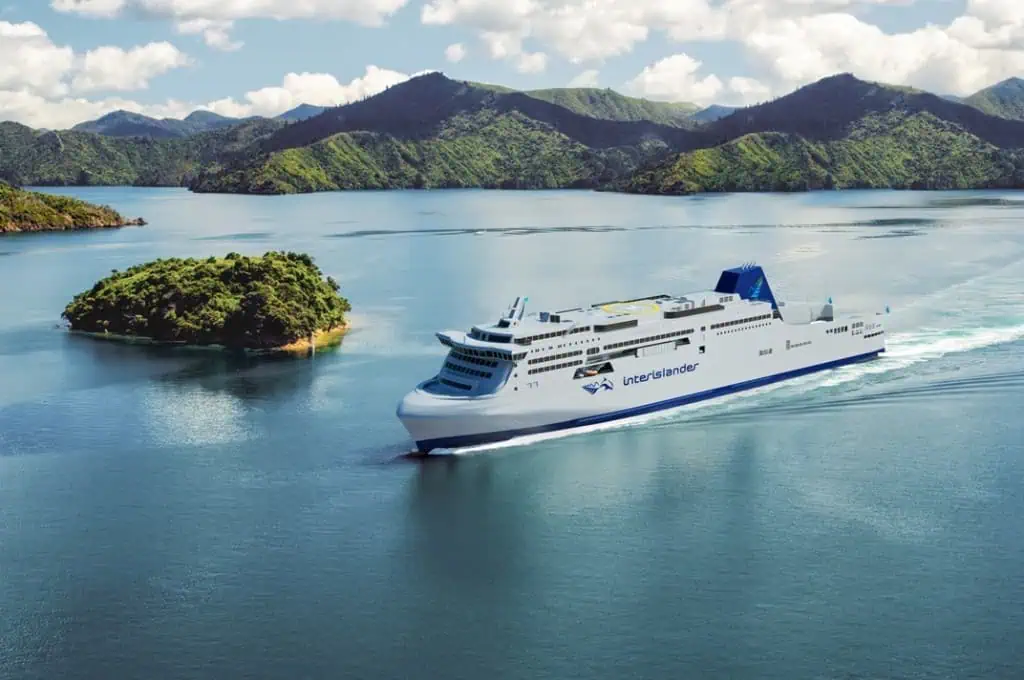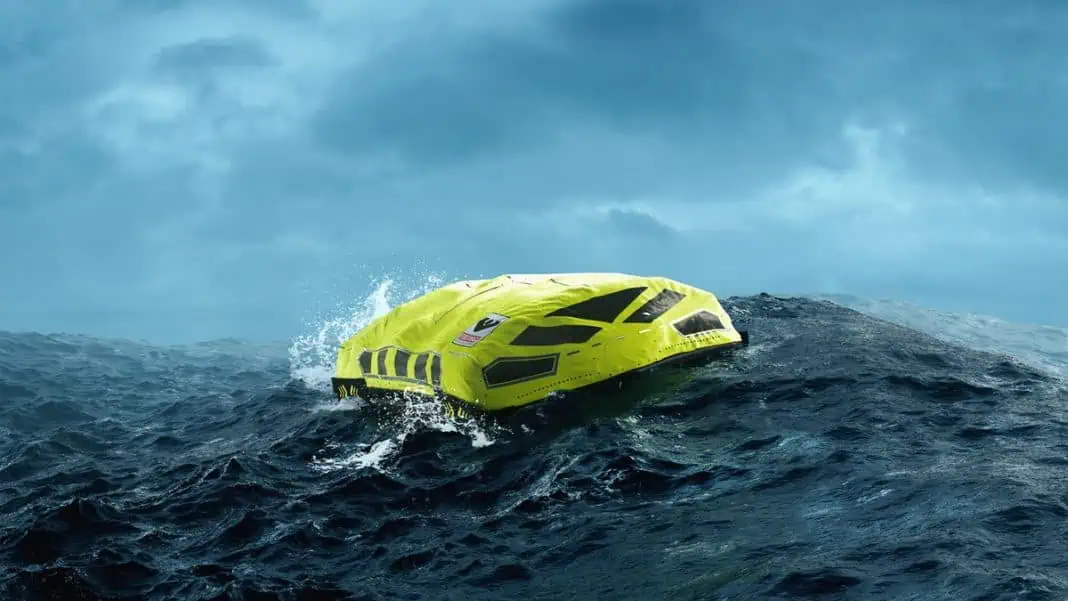Announced as a gamechanger in ship evacuation, the VIKING LifeCraft system is now bound for installation on its first series of new build vessels. The system will serve as the main evacuation solution on board the new diesel hybrid-electric Interislander ferry fleet operated by KiwiRail to connect the two main islands of New Zealand
For more than 60 years, KiwiRail ferries have provided a connection for 800,000 annual passengers between New Zealand’s North and South Island. To futureproof the country’s main link across the Cook Strait, KiwiRail is replacing the fleet with two new purpose-built ships, currently in the advanced design phase at the Hyundai Mipo Dockyard in South Korea.
To that end, the LifeCraft advanced evacuation system from the renowned global manufacturer VIKING Life-Saving Equipment has been chosen as the new primary safety system onboard. The LifeCraft™ system comprises four 203 person self-propelled survival craft bringing together the advantages of premium lifeboat, liferaft and evacuation system technology in a revolutionary hybrid solution.
“When deciding to renew a fleet trusted to serve millions of people, the replacement vessels must exceed traveler expectations and be of the highest standard in terms of quality, technology, efficiency, and safety. This is also the case for the onboard evacuation systems, which is an area where compromise is never an option. Here, LifeCraft and the innovation and extensive testing backing the system has proved to be an excellent survival craft solution. Beyond potentially providing an increase in safety, the system also saves large amounts of space, weight and time-consuming procedures’” says Massimo Soprano, Ships Programme Director, iReX, KiwiRail.”
Saving lives and more
One of the areas where the VIKING LifeCraft system is breaking new ground in general is the digitalization of the entire pre-departure safety-check. Instead of taking up the crew’s time and relying on manual processes such as testing combustible fuel engines, the captain or safety officer has the readiness status of the system available at the touch of a button directly from the vessel’s bridge, within just a few moments.
Efficiently outperforming every safety standard in its field, the LifeCraft is also a compact system. All system elements – from the EscapeWay 4-chute system to the four 203-person capacity inflatable craft, are stored together in the same unit which can be either placed on deck or built into the side of the vessel.
“During the development process of LifeCraft, compactness has been an important parameter all the way through. For the Interislander ferries as well as any other ship that will be a major asset in terms of both safety, comfort, and the demand for space on deck to utilize for other purposes,” says Niels Fraende, Vice President of LifeCraft Sales at VIKING.
In the case of LifeCraft, compactness also equals saving weight and by that reducing vessel fuel consumption. This altogether changes the way ships are designed and constructed:
“Be it a ferry or a cruise-ship, the integration of safety systems is paramount in the ship-design process, which means that it at times will be a priority at the expense of aesthetics or comfort. This system makes this trade-off irrelevant by offering a solution that – apart from being a state-of-the art safety system – also is both practical, light, and visually appealing,” says Anders Ørgård, CEO at the maritime design company OSK-ShipTech assisting in the construction of the new Interislander ferries.

The future of safety is electric
Should it be brought into action, the LifeCraft system is able to evacuate over 800 people within only 30 minutes. After evacuation, each of the systems four craft will take advantage of their all-electric propulsion setup to move into and maintain a safe position while waiting for help to arrive. If needed, the four electric engines combined with a high level of seaworthiness, means that each craft can use its 360-degree maneuverability and acceleration to support SAR operations even in severe weather conditions and high sea states. This way, the LifeCraft system could enhance the overall rescue capability of the Interislander ferries, because it has the additional feature of being able to rescue people from the water if an incident occurs on another vessel in the area.
“It is truly a great joy for us to see that the innovative thinking of VIKING engineers as well as years of development and numerous tests in very harsh conditions is now set to raise the standards of maritime safety out in the real world. KiwiRail’s choice of implementing the LifeCraft onboard of their new Interislander fleet marks that the future of maritime safety is no longer just around the corner – it is now,” Niels Fraende, Vice President of LifeCraft Sales at VIKING.
Bruce McDonald is Technical Authority at the classification organization Lloyd’s Register and knows a thing or two about the standards of maritime safety. And he agrees:
“Advanced hybrid evacuation systems like the LifeCraft are a significant shift in how we think about maritime safety and vessel evacuation, where there has been a longstanding tradition of thinking in boats and rafts in terms of life-saving equipment. This is an innovative and safe alternative that combines existing and new technologies. At the same time, it opens a range of new possibilities in the sector, which we of course always welcome.”
The first new Interislander ferry is expected to assume full scale operation across the Cook Strait in late 2025, with the second ship to follow in 2026











